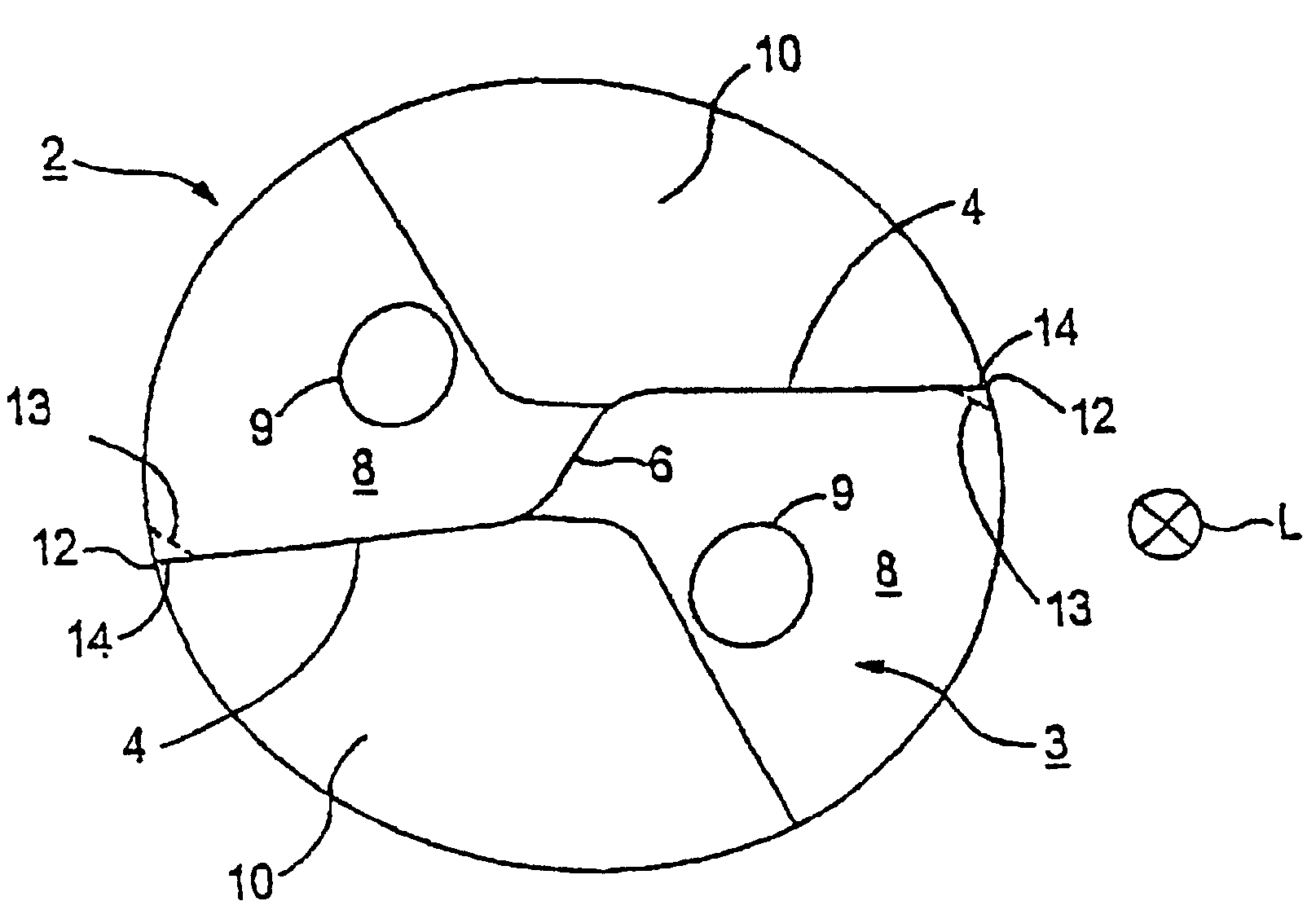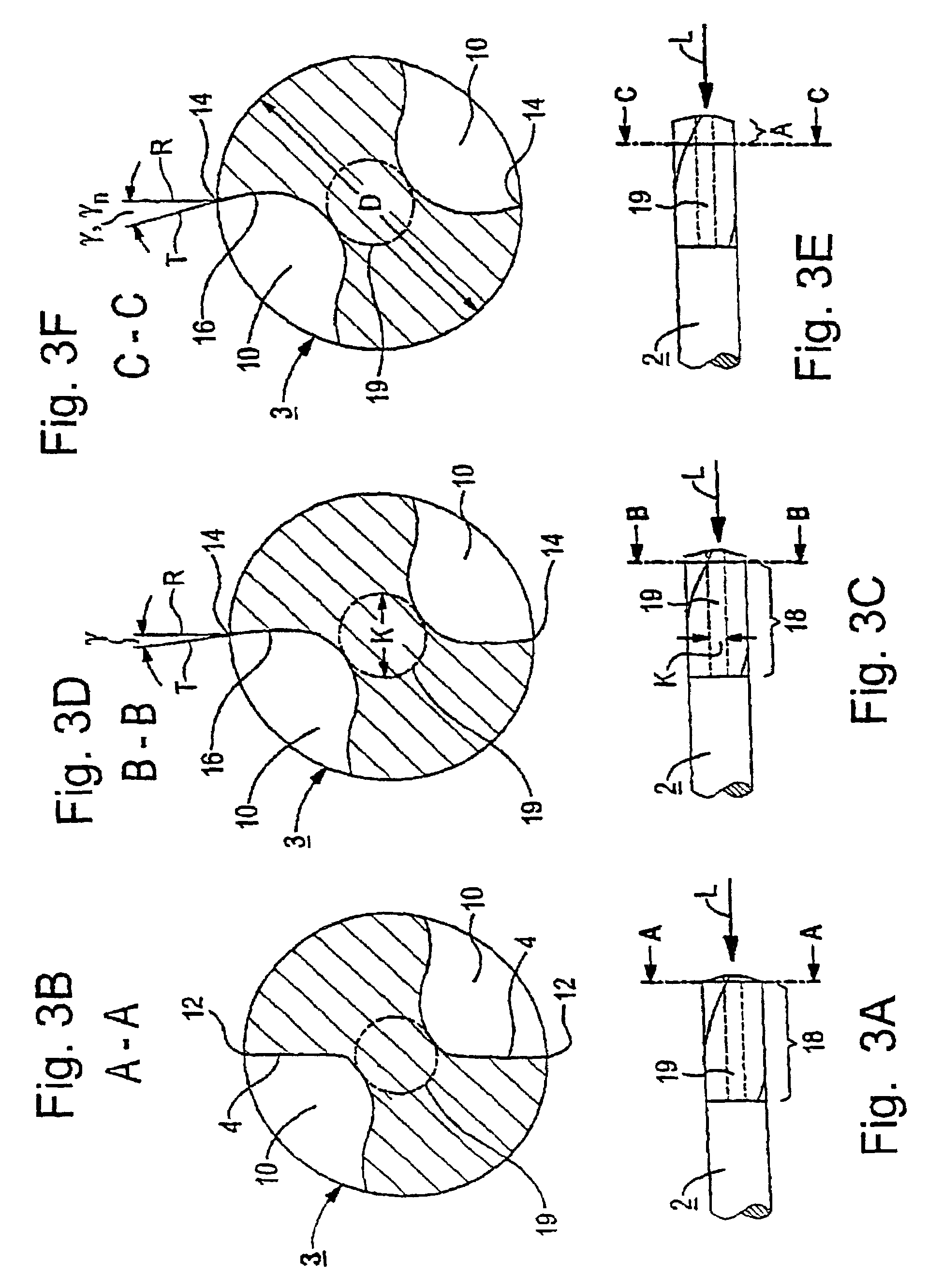Twist drill and method for producing a twist drill which method includes forming a flute of a twist drill
a twist drill and drill bit technology, which is applied in the direction of twist drills, manufacturing tools, wood boring tools, etc., can solve the problems of drill breaking off, comparatively weak cutting wedges in the vicinity, and high drilling forces
- Summary
- Abstract
- Description
- Claims
- Application Information
AI Technical Summary
Benefits of technology
Problems solved by technology
Method used
Image
Examples
Embodiment Construction
[0054]In the figures, identical parts or parts that have an equivalent effect are identified by the same reference numbers.
[0055]A conventional twist drill 2 illustrated in FIG. 1 and called a drill for short, has on the face end of its drill bit 3 two main cutting edges 4 which are connected to each other by a chisel edge 6. The main cutting edges 4 and the chisel edge 6 are curved in approximately the shape of an “S”. Adjacent to each of the two main cutting edges 4 is a main clearance face or surface 8, each of which transitions into a flute 10.
[0056]The two main cutting edges or lips 4 run in approximately the radial direction of the drill 2. The main clearance faces 8 each have coolant boring 9, by means of which the drill 2 can be cooled during the drilling process. Adjacent to each of the main cutting edges 4 on the end-side, thereby forming a face edge 12, is a secondary cutting edge 14, which run in the longitudinal direction L of the drill, i.e. into the plane of the paper...
PUM
| Property | Measurement | Unit |
|---|---|---|
| Angle | aaaaa | aaaaa |
| Angle | aaaaa | aaaaa |
| Angle | aaaaa | aaaaa |
Abstract
Description
Claims
Application Information
 Login to View More
Login to View More - R&D
- Intellectual Property
- Life Sciences
- Materials
- Tech Scout
- Unparalleled Data Quality
- Higher Quality Content
- 60% Fewer Hallucinations
Browse by: Latest US Patents, China's latest patents, Technical Efficacy Thesaurus, Application Domain, Technology Topic, Popular Technical Reports.
© 2025 PatSnap. All rights reserved.Legal|Privacy policy|Modern Slavery Act Transparency Statement|Sitemap|About US| Contact US: help@patsnap.com



